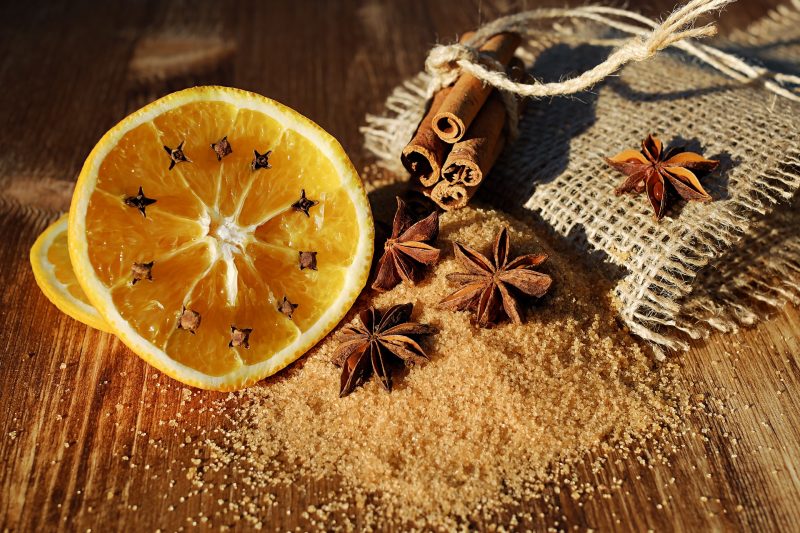
5 Chemicals That Make You Feel Like Christmas Is Here
The sense of smell is inevitably linked to memory, mood and emotion. And Christmas smells like many things: oranges, conifer, cloves, cinnamon, mulled vine. You name it! The archetypical Christmas fragrance is therefore a result of many years of conditioning. A person could be exposed to these scents already in the early childhood and then experience them every year at a similar time, reinforcing the association. Even though odor chemistry is complex and specific smells are almost never caused by just one compound, rather an interaction of many of them, let’s take a closer look into 5 universally common Christmas-specific fragrances.
So, what is the first smell which comes to your mind if you think about Christmas? Personally, for me it is the smell of oranges. I close my eyes and imagine the bright orange color and that special distinctive fresh smell which is caused by limonene. More specifically, the D-isomer of this molecule. Limonene is the major component of the oil of citrus fruit peel. Limonene belongs to terpenes, a chemical compound class consisting of small molecules made up of isoprene units. Commercially it is obtained from citrus fruit via centrifugal separation or steam distillation. One interesting thing to note is that limonene is obtained directly from natural sources while another Christmassy smell – vanilla, nowadays mostly comes from synthetic sources as the demand of vanilla flavor has long exceeded the supply of vanilla beans – the most significant natural source. Though the extract of vanilla consists of many ingredients, the primary component to give the smell is vanillin, which is a phenolic aldehyde. Naturally vanilla is obtained from seed pods of vining orchid which grows in Mexico.
Another typical Christmas fragrance is clove. A compound called eugenol is responsible for the odor of this spice. Eugenol is an allylbenzene, up to 90% of which makes up the clove bud oil, as well as another natural extract – clove leaf oil. Interestingly, eugenol was used as a starting material for the first synthesis of vanillin which happened at the end of 19th century, and it was used for synthetic manufacture of vanillin until 1920s. Cloves are flower buds from a tree Syzygium aromaticum which is native to some islands in Indonesia. If you play around with the structure of Eugenol, with a few changes here and there you can obtain cinnamaldehyde, a compound which gives cinnamon it’s specific smell and flavor. Cinnamaldehyde is an aromatic aldehyde. The essential oil of cinnamon bark contains about 90% of this compound. Cinnamon is obtained from a tree from Cinnamomum species with the vast majority of the spice produced in Indonesia and China.

And last, but not least – the Christmas tree. Nothing beats the aroma of a natural Christmas tree and isn’t it the main smell to tell you that the holiday season is here? Most of the conifer smell is caused by the chemical compounds called terpenes. Alfa and beta pinenes have a familiar turpentine smell, but the clean pine smell is created by the bornyl acetate, which is an ester. While bornyl acetate is a component of the essential oil from pine needles, many terpenes, which can add to a Christmas tree smell, commercially are delivered from the resins of conifers. Above mentioned terpene limonene also adds to the conifer smell, though it plays a minor role. But as mentioned before, many compounds can complement each other to give a specific aroma and mood, and the smell of the Christmas tree is one of the best examples here.
On a final note – there are, of course, many more different smells which can be attributed to Christmas. But perhaps we´ will dive into them next time. What is the most Christmassy fragrance to you?
Sources and further reading:
https://www.chemeurope.com/en/encyclopedia/Vanillin.html
https://open.spotify.com/episode/vanillin
https://www.chemistryworld.com/podcasts/cinnamaldehyde
https://www.chemistryworld.com/podcasts/eugenol
https://en.wikipedia.org/wiki/Eugenol
https://en.wikipedia.org/wiki/Limonene
https://en.wikipedia.org/wiki/Terpene

0 comments